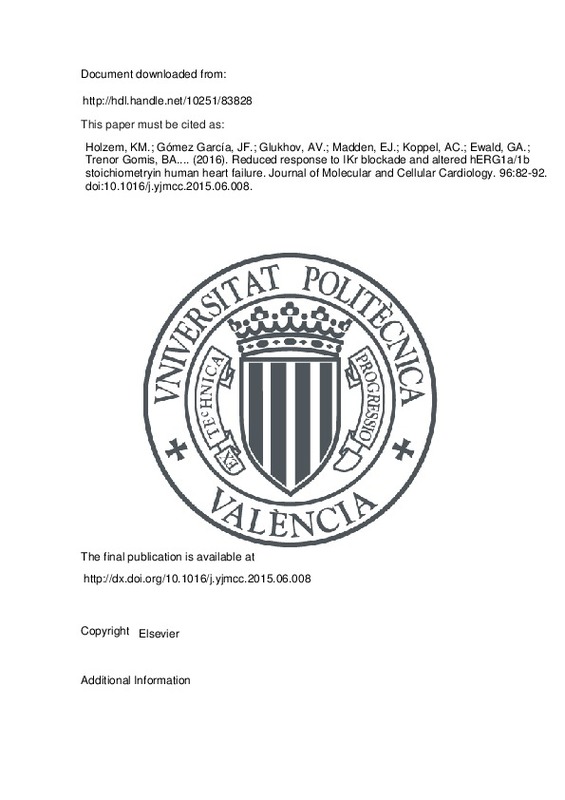JavaScript is disabled for your browser. Some features of this site may not work without it.
Buscar en RiuNet
Listar
Mi cuenta
Estadísticas
Ayuda RiuNet
Admin. UPV
Reduced response to IKr blockade and altered hERG1a/1b stoichiometryin human heart failure
Mostrar el registro completo del ítem
Holzem, KM.; Gómez García, JF.; Glukhov, AV.; Madden, EJ.; Koppel, AC.; Ewald, GA.; Trénor Gomis, BA.... (2016). Reduced response to IKr blockade and altered hERG1a/1b stoichiometryin human heart failure. Journal of Molecular and Cellular Cardiology. 96:82-92. https://doi.org/10.1016/j.yjmcc.2015.06.008
Por favor, use este identificador para citar o enlazar este ítem: http://hdl.handle.net/10251/83828
Ficheros en el ítem
Metadatos del ítem
| Título: | Reduced response to IKr blockade and altered hERG1a/1b stoichiometryin human heart failure | |
| Autor: | Holzem, Katherine M. Gómez García, Juan Francisco Glukhov, Alexey V. Madden, Eli J. Koppel, Aaron C. Ewald, Gregory A. Efimov, Igor R. | |
| Entidad UPV: |
|
|
| Fecha difusión: |
|
|
| Resumen: |
Heart failure (HF) claims 250,000 lives per year in the US, and nearly half of these deaths are sudden and presumably
due to ventricular tachyarrhythmias. QT interval and action potential (AP) prolongation are hallmark ...[+]
|
|
| Palabras clave: |
|
|
| Derechos de uso: | Reserva de todos los derechos | |
| Fuente: |
|
|
| DOI: |
|
|
| Editorial: |
|
|
| Versión del editor: | http://dx.doi.org/10.1016/j.yjmcc.2015.06.008 | |
| Código del Proyecto: |
|
|
| Agradecimientos: |
We thank the Translational Cardiovascular Biobank & Repository (TCBR) at Washington University for provision of donor/patient records. The TCBR is supported by the NIH/CTSA (UL1 TR000448), Children's Discovery Institute, ...[+]
|
|
| Tipo: |
|







![[Cerrado]](/themes/UPV/images/candado.png)


